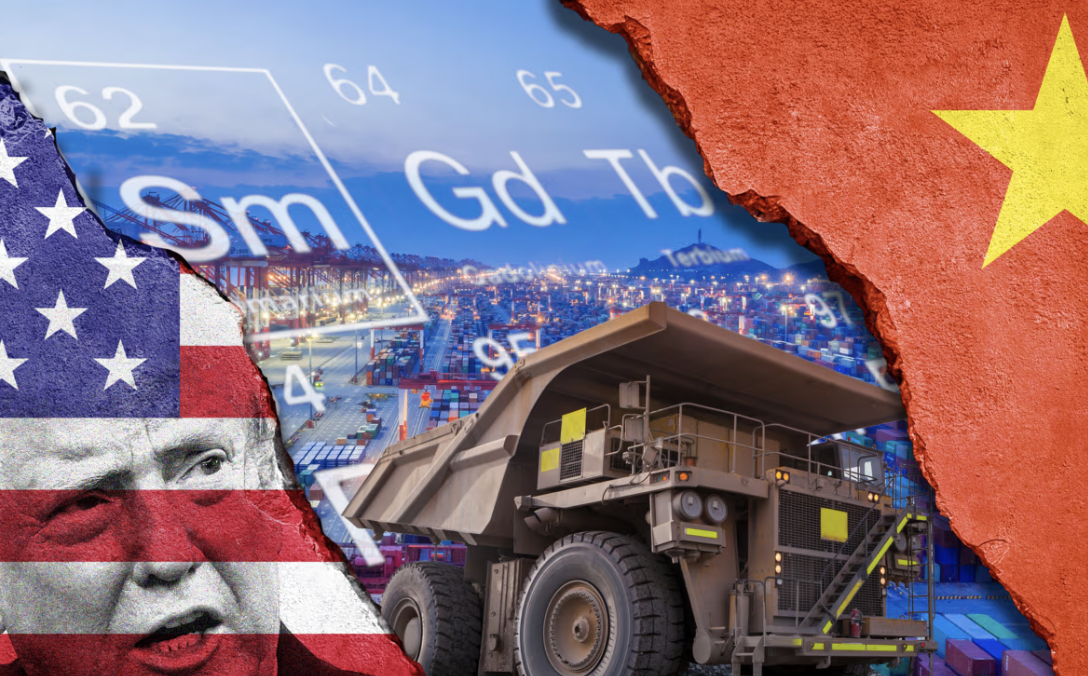Recent trade data reveals that Chinese exports of rare earth magnets experienced a significant uptick in June, following earlier disruptions that had impacted U.S. manufacturers. Export volumes reached 3,188 tons in June, marking a substantial increase from May’s 1,238 tons, with U.S.-bound shipments rising to 353 tons from the previous month’s 46 tons.
This increase comes in the wake of Beijing’s April restrictions on seven critical rare earth elements (REEs), which had caused
considerable disruption to global supply chains. Despite the recent recovery in export volumes, overall shipment levels remain below normal, prompting concerns about supply adequacy to meet global demand.
The situation has highlighted America’s vulnerability in the rare earth supply chain, with China maintaining control over approximately 90% of global REE production. These materials are crucial components in manufacturing everything from electric vehicles and smartphones to military equipment like fighter jets and missiles.
The supply constraints earlier this summer had particularly affected U.S. companies, including major manufacturers like Ford Motor Company, whose production lines faced disruptions due to the shortage. While President Trump’s administration secured a trade agreement that led to resumed shipments, the volume remains insufficient to fully satisfy market requirements.
In response to these challenges, Washington has intensified efforts to establish an “ex-China supply chain” for rare earth elements, recognizing the national security implications of such heavy dependence on Chinese imports. This initiative has sparked increased investment activity in the sector, with notable developments including the Pentagon and Apple taking ownership positions in MP Materials, a key player in America’s rare earth industry.
Morgan Stanley’s metals and mining team has recently published analysis detailing the transformation occurring in the rare earth sector, offering guidance for investors looking to capitalize on these developments. The focus on establishing domestic supply chains has become particularly urgent given the strategic importance of rare earth elements and permanent magnets in defense applications.
The current situation represents a deliberate balancing act by Chinese authorities, who appear to be maintaining just enough supply flow to keep international manufacturers dependent on their exports while demonstrating their ability to leverage this critical resource as a strategic tool. This approach has effectively highlighted the vulnerabilities in global supply chains and the urgent need for alternative sources.
U.S. policymakers have responded by accelerating efforts to develop domestic rare earth processing capabilities and secure alternative supply sources. These initiatives form part of a broader strategy to reduce reliance on Chinese imports for critical materials,
particularly those essential for defense and high-technology applications.
The development of an independent rare earth supply chain has become a priority for American industrial policy, with increased investment in domestic processing facilities and partnerships with allied nations to diversify supply sources. This shift represents a significant change in approach to securing critical materials, moving away from decades of reliance on Chinese suppliers.
The recent export fluctuations have served as a wake-up call for both industry and government officials, highlighting the risks of concentrated supply chains for essential materials. While China’s increased exports have provided temporary relief to manufacturers, the underlying structural challenges remain, driving continued efforts to develop alternative supply sources and processing capabilities outside of Chinese control.

